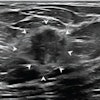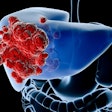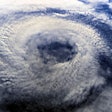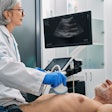Scientists from the University of Southern California in Los Angeles and Washington University in St. Louis have developed a photoacoustic endoscopy method that combines a photoacoustic imaging device with an ultrasound endoscope.
The technique can provide deeper penetration than optical endoscopy and more functional contrast than ultrasonic endoscopy, according to principal investigator Lihong Wang, PhD, of Washington University.
While ultrasound endoscopy can yield high-resolution images, they are also low contrast. By adding a photoacoustic imaging device to the ultrasound endoscope, the technique zaps organ tissue with a light; when the light is absorbed by tissue, the tissue gets slightly hotter and expands. The expansion produces a sound pressure wave that the ultrasound device on the endoscope can pick up, according to the researchers.
The team said it tested its new device inside the gastrointestinal tract, where it produced in vivo images detailed enough to show blood vessels, as well as the density of the tissue around them. The researchers believe it may also facilitate earlier detection of prostate and colon cancers.
The research was funded by the U.S. National Cancer Institute and was published in Nature Medicine on July 15.



















